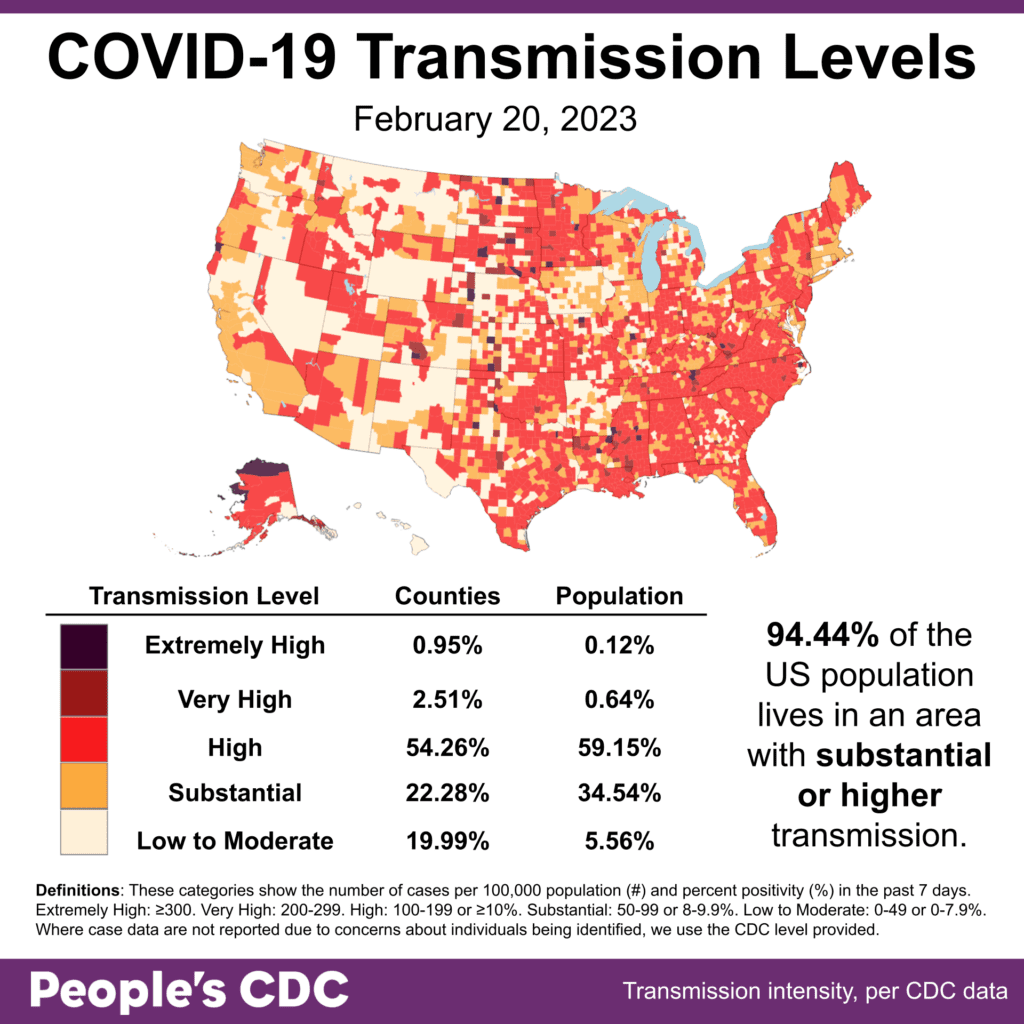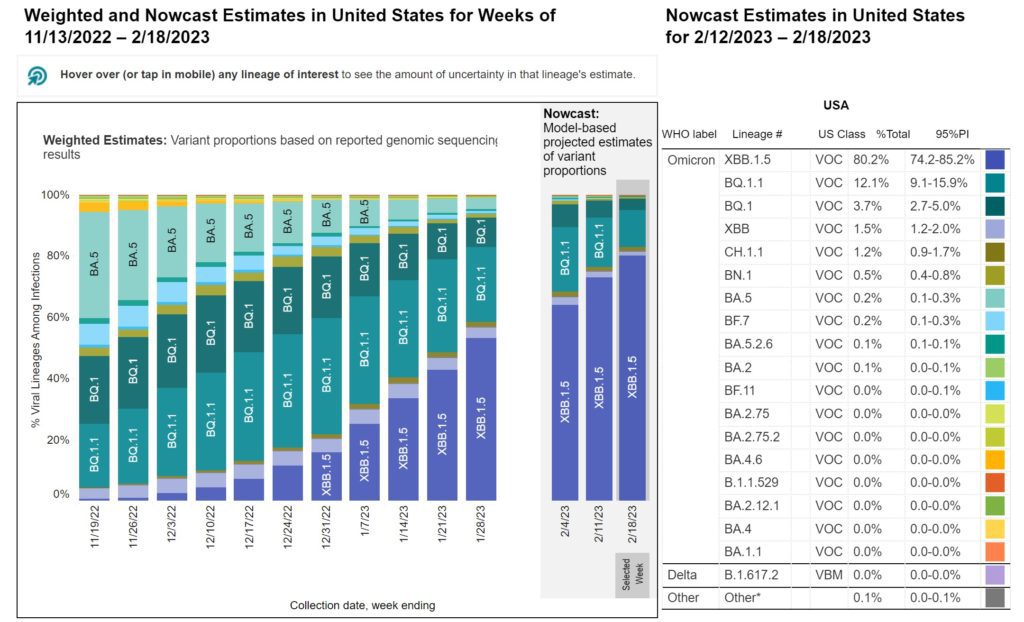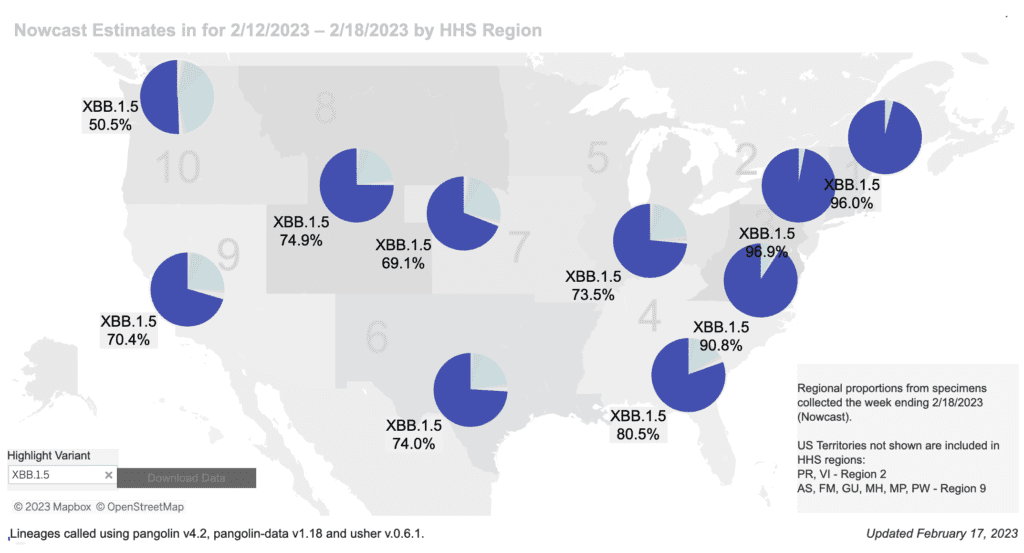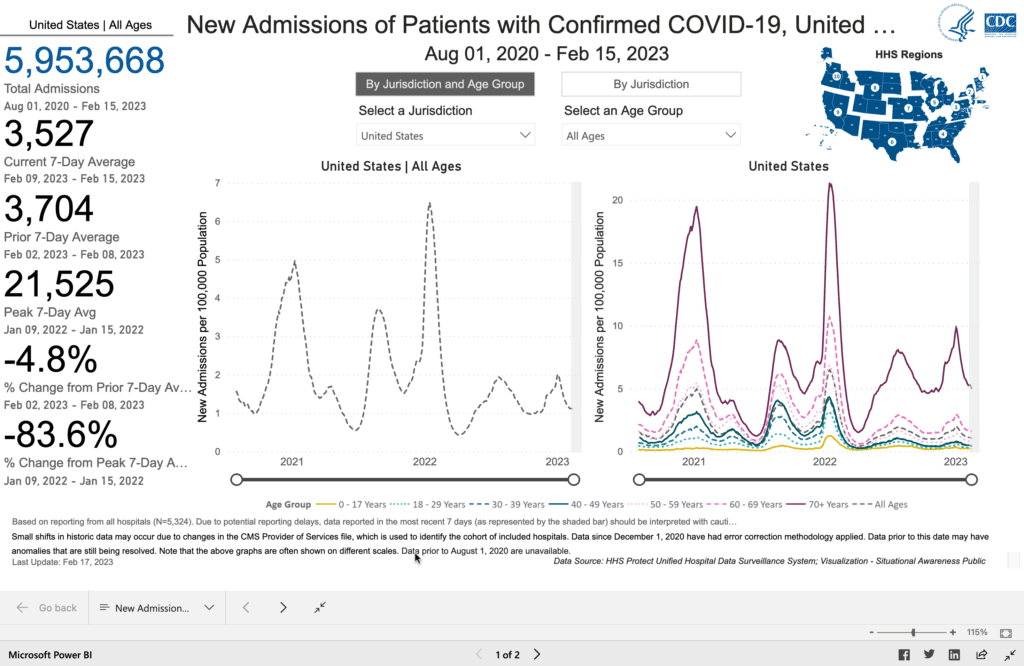El clima: While levels remain at 94.44% of the population living in areas with substantial or higher transmission, there’s a slight increase in those living with areas of Very High transmission.
Due to incomplete data reporting from Utah, Maine, and New Mexico, cases are underreported this week. This means that likely more than 94.44% of the population are living in areas with substantial or higher transmission levels.

Logros: Tracking only transmission or variant evolution can be bleak and collective action creates the possibility of a more equitable pandemic response. Starting this week, we will highlight “wins” – stories of people making workplaces, gatherings, & institutions safer for all.
Organizers used our Safer Gatherings toolkit and @DisabledAcadem resources to convince a conference to shift their policies.
The National Students for Justice in Palestine Conference featured layers of protection including KN95 masks from @projectN95, daily rapid tests from @lapublichealth, outdoor meals, and more. We advised on their COVID protocol and created this poster for them to hang!

We look forward to learning about and sharing more wins! Our hope is that these stories will inspire and build the collective power we’ll need to shift our government’s response.
Sobre variantes: This week, Kraken (XBB.1.5) makes up 80.2% of cases, surpassing last week’s total of 74.7% of cases, which was reported in last week’s Weather Report.

Tiempo regional differences continue, XBB.1.5 makes up more than half of cases in all regions and more than three quarters of cases in Regions 1, 2, 3, and 4. XBB.1.5’s consistently fast spread highlights the importance of maintaining COVID-19 protections.

Monitoreo de aguas residuales: Although the Midwest and South saw slightly lower niveles de aguas residuales, the Northeast and West experienced an increase.

Hospitalizaciones: A drug aimed at curbing severe COVID has renewed hope among researchers, given the limited treatments left to beat back serious infections. But it will continue to face regulatory hurdles to make its way to patients.
A review of current COVID therapies recommends continued drug development with an emphasis on “combinatorial drug therapies that can be used prophylactically, to prevent infection and stop onward transmission.”
Researchers identified a protein in the lungs that may help protect against COVID. Although hospitalizaciones for confirmed COVID cases are declining, they still remain at high levels and the rates for those over 70 remain the highest.

Fallecidos: The week of February 18, at least 2,838 people died of COVID nationally. At least 1,113,245 people have died from COVID in the US.
Covid Largo: Evidence increasingly suggests that Long COVID is a neurological disease, suggesting a focus on the brain and nervous system for treatment development.
Black Americans, already facing a disproportionate burden of COVID illness and death, also face implicit bias and trouble accessing care for Long COVID.
NIH studies recently showed significant racial disparities in risk of hospitalization and Long COVID, with Hispanic and Black adults more likely to experience ongoing symptoms.
A new estudio reciente found COVID Omicron infection continues to be associated with an increased risk of diabetes. That risk was higher in unvaccinated patients, suggesting a benefit of vaccination.
Pronóstico: Moderna is the only manufacturer to announce free vaccines for the uninsured. Unfortunately this will be implemented through a patient assistance program which requires complex applications. Vaccines should be free for all, with no additional administrative burden.
The US government has agreed to buy 1.5 million more doses of Novavax and fund an updated vaccine for this fall.
Tome accion: New CDC MMWR shows that people with bivalent vaccine were 14x less likely to die than unvaccinated and 3x less likely to die than those who received the monovalent series. Tell your friends and family to get the latest booster!
Check out this brief commentary on the HHS briefing about the end of the public health emergency (PHE).
Speak out against the end of the PHE aquí y aquí. Support masks in healthcare settings aquí.
Notes: 1) The numbers in this report were current as of 2/17. The CDC updates data frequently as it receives refreshed information. Today’s numbers may be slightly different from the data here. 2) Check out the links throughout & see our website for more! https://bej.gbh.mybluehost.me.